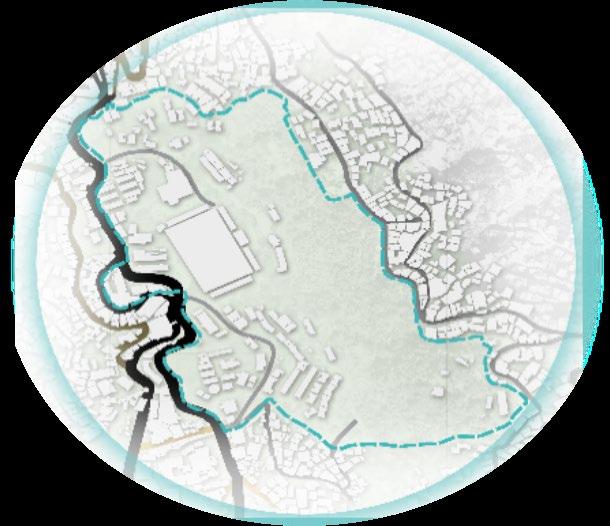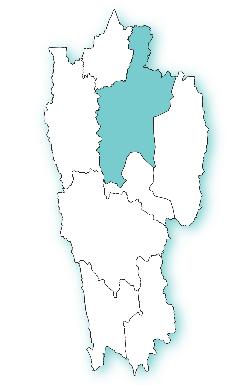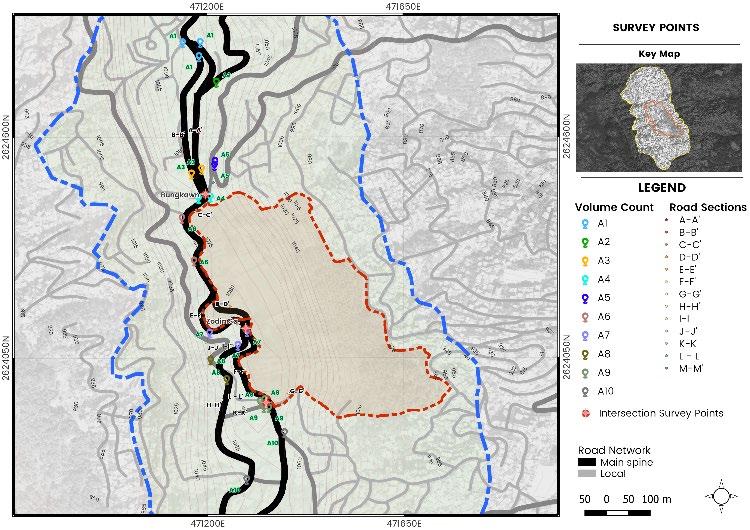ACADEMIC INTERNSHIP REPORT
ORGANISATION:
TOWN & COUNTRY PLANNING OFFICE (TCPO), AIZAWL

Submitted by: Vanlal Hruaia
2020BPLN037
Subject: Planning Internship
BPLN0714

1
Report Title : Academic Internship
Company : Urban Development & Poverty Alleviation (UD&PA), Town & Country Planning Office (TCPO)
Location : Aizawl, India
Internship Period : 3 months (25th May – 25th August 2023)
Student : Vanlal Hruaia
Program : Bachelor of Planning
2 CONTENTS 1.Contents 2 1.1 List of Tables 3 1.2 List of Figures 3 2. Introduction 4 2.1 The Team 5 2.2 Time Schedule 6 3. Project - I: Site Mobility Plan for AR Ground, Aizawl 7 3.1 Project Introduction 8 3.2 Work Accomplishment 3.3 Way forward 11 4. Project - II: Local Area Plan & Town Planning Scheme (LAP/TPS) 12 4.1 Project Introduction 12 12 4.2 Review of the project report 4.3 Remarks 4.4 TPS Sairang 4.5 Conclusion 13 14 15
1.1 List of Tables
Table 1: Work Timeline (Week Wise)
Table 2: Remarks given to LAP/TPS
1.2 List of Figures
Figure 1.1: Site Map, terrain view
Figure 1.2: Basemap preparation
Figure 1.3: Activity Mapping
Figure 1.4: Contour and slope analysis
Figure 1.5: Climate & Rainfall analysis
Figure 1.6: Sun Path Diagram
Figure 1.7: Site Analysis
Figure 1.8: Layout Plan
3
2. Introduction
Town & Country Planning Office (TCPO), Aizawl
Town & Country Planning Office, Aizawl was formed in 1978 as a cell under the LATP & H Department and then after the formation of Urban Development & Poverty Alleviation (UD & PA) Directorate/Department by the Mizoram government in 2006, the TCPO, Aizawl functions under the UD & PA Department.
The services of the TCPO includes:
1. City Master Plan preparation
2. Spatial planning and Policy formulation
3. Monitoring & Evaluation
4. Implementation of urban planning projects such as LAP/TPS, AMRUT, etc.
5. Zonal plan/layout plan/development scheme & development control

6. Construction works – NLCPR & IDSMT

The domain areas of service provision include:
1. Governance & Institutional capacity
2. Urban planning and land development
3. Solid Waste, Water & Sanitation
4. Urban Transport planning
5. Housing
6. Energy, Environment & Sustainability
7. Urban touchpoints for Health and Education
The office worked with:
4
2.1 The Team
Zoduailova Zote
Joint Director, TCP Office, Aizawl
Mr. Zoduailova Zote is an Urban Planner with a degree in M. Plan (Urban and Regional Planning) from the School of Planning & Architecture, Delhi (SPAD)
Lalthanghliri Pautu
Assistant Director, TCP Office, Aizawl
Ms. Lalthanghliri Pautu (Mami) is an Urban Planner with a degree in M. Plan (Environmental Planning) from the School of Planning & Architecture, Delhi (SPAD). She has over 10 years of experience across State & Central Govt. agencies in Urban Planning and Development formulation. With a passion for policy and design, she inquiries into the housing, urban land governance and transformation perspectives that inform development.
R. Lalhmangaihzuali
Assistant Director, TCP Office, Aizawl
Ms. R. Lalhmangaihzuali (Zualtei) is an Urban Planner with a degree in M. Plan (Housing Planning) from the School of Planning & Architecture, Delhi (SPAD). She has worked in urban planning consulting and Aizawl Smart City Limited. Her core area of interest is the design and regulation of space uses.
Lalremruati Chawngthu
Urban Planner, TCP Office, Aizawl
U Torri Robot is an Urban Planner with a degree in M. Plan (Environmental Planning) from the School of Planning & Architecture, Delhi (SPAD). She is interested in urban design, master plan formulation and building constructions cum regulations. She has her bachelor’s degree in architecture from the same institute.
5
2.2 Time Schedule
The Gantt Chart shown below (figure 1.1) provides an overview of the projects that I was involved in, and the work schedule followed for the 12 weeks of the Internship. The timeline shows that the work progressed in a linear manner with constant evaluation and revision.
The major project that I contributed to be the Site Plan for AR Ground, Aizawl. My work for the same was divided into 4 parts consisting of Local Area Plan (LAP) & Town Planning Scheme (TPS), Preparation of Township Policy, Mizoram Urban and Regional Development Bill, 2023, Kolasib & Khawzawl Master Plan preparation, and TCP Reform Presentation preparation. Apart from these, I also got to learn about the process and data analysis methodology of the preparation of Master Plan in Mizoram and how they have been executed in the past years.
Site Plan/Mobility Plan for AR Ground, Aizawl
Local Area Plan & Town Planning Scheme (LAP/TPS)
Preparation of Township Policy (MURD Bill,2023)
Mizoram Urban & Regional Development Bill, 2023
Kolasib & Khawzawl Master Plan Preparation
6
Week 1 Week 2 Week 3 Week 4 Week 5 Week 6 Week 7 Week 8 Week 9 Week 10 Week 11 Week 12
Table 1: Work Timeline (Week Wise)
3. Project – I: Site Mobility Plan for AR Ground, Aizawl



3.1 Project Introduction












The aim of this project is to analyze the existing circulation pattern and formulate interventions of AR Lammual and its influenced area. Its objectives are to conduct comprehensive traffic surveys and analyze the existing condition and to formulate strategies for the improvement of congestion within the area. The project will have greenfield development and a Regulatory Framework for Lammual will be made which will include certain developments in and around Lammual area for the public use will eventually lead to an influx in vehicular and pedestrian traffic.
The planning area lies in the central area of Aizawl city and The Lammual (Parade Ground) of Assam Rifles is of historical value and is a place to celebrate Republic Day, Independence Day and it is also the hub of all sports, religious and social activity in the capital.
The current Assam Rifles will be relocated outside the city and the area will be used for public spaces and urban redevelopment through The Mizoram Restriction on Use of Transferred Land Act, 2002


7
INDIA MIZORAM AIZAWL AR GROUND
3D VIEW
Figure 1.1: Site Map, terrain view
3.2 Work Accomplishment

For forty (40) days, I have worked on site analysis, preparation of the traffic and transportation survey format for the site plan, with up to the layout and circulation plan level for the AR Ground. I started with the base map preparation then Lynch analysis and further with the mobility concerns such as traffic surveys, etc. The site is applicable to formulating interventions through place-making and open space design, since it is in the central spine of the Aizawl city, the site plan will ultimately help in the traffic movement around the region.


Road network:

Main Spine and Local Roads



3 meters to 15 meters R.O.W

Builtup:

Lammual - 147 builtup (2.54 hac) with 0.83 hac of football field
Planning area – 2562 builtup (40.19 hac)

Physical features:
Lammual – 8.48 hac of vacant land & 6.01 hac of urban forest area


8
Figure 1.4: Contour and slope analysis
Figure 1.2: Basemap preparation
Figure 1.3: Activity Mapping
AR Ground, Aizawl, Mizoram, India
23.729°N, 92.719°E | Elevation: 1083 m
Climate Class: Cwa–monsoon–influenced humid subtropical climate.

Mean Temperature : 20.9°C
Precipitation sum : 2626mm (103 inches)

Data Source : CRU Time Series v4.05

9
Figure 1.5: Climate & Rainfall analysis
Figure 1.6: Sun Path Diagram







10
Figure 1.7: Site Analysis
3.3 Way forward
The nature of work ranges from qgis map preparation, survey points identification, literature study of site plan and Aizawl planning document, to preparing project report for financial support from the higher authorities. Lastly, I have made the layout plan of the site under the supervisor of Ms. Lalthanghliri Pautu where we have proposed a bypass road, zoning, and circulation plan. The project’s priority went low when another project must be finished. The project will then be continued in future when financial support is accepted for the survey.


11
INTERSECTION DESIGN
Figure 1.8: Layout Plan
4. Project – II: Local Area Plan & Town Planning Scheme (LAP/TPS)
4.1 Project Status
The LAP/TPS program are both in a preliminary stage, they are working documents. The conceptual plan and objectives made are all interchangeable and this report will give remarks/suggestions for the project.
A preliminary survey has been conducted by the Land Revenue department. The process of LAP includes seven (7) stages such as area delineation (completed), base map preparation (completed), policy formulation (in progress), draft planning (in progress), stakeholder consultation, statutory compliances, implementation.
Thus, this formulation of LAP/TPS will be further analyzed and with this evaluation report, the W.R.I India may emphasize based on the remarks.
4.2 Review of the project report
a) As mentioned in the introductory part of the project report, the main objectives of LAP and TPS are to meet the existing demand without deteriorating the resources and to meet future pressures. It can be inferred that the public utilities must be highly prioritized in a crucial project such as the Local Area Plan (LAP), which is absent from this report.
b) There is a lack of water and proper road network, there is no indication of the jurisdiction and administration of the town’s infrastructure. So why not focus on providing basic amenities to the households through this Local Area Plan.
c) Modus operandi: This project is almost entirely proposals after proposals without consideration of urban planning criteria such as URDPFI guidelines and benchmarking in the physical sectors. Since we are planning for the inhabitants, I would like to request that this physical sector has to be adequate enough to plan more of the infrastructures mentioned in the project report and let the dynamic of this project proceed as an issue-wise proposals since the main objective of AMRUT is to ensure a proper supply of water and a sewage connection in every household and to develop green and well maintained open spaces and parks to increase the amenity value of the cities.
12
4.3 REMARKS
Topic Page Remarks
Administration 34
Economy 73-81
Governance structure of who/which dept. is taking care of the amenities is absent (Sector wise)
Moderate explanation of the vision and objectives but lack of quantitative information for the said strategy ‘enhancing indigenous economy’.
A room of improvement for HOW the strategy will progressively increase the economy through numbers(data) and charts.
Household survey is absent in LAP/TPS.
Transport -
The regional setting of LAP Sihphir & TPS Sairang is not clearly mentioned, especially in the trip generation, fright.
The LAP/TPS projects have several proposed interventions, and these infrastructures/areas will generate traffic, to nurture the urban freight and local parking facilities should be prioritized.
Information on I.P.T, vehicular composition, and parking facilities (according to guidelines) is absent.
Proposals 96
Interventions for storage/godowns are not considered while preparing Agricultural Trade Centre strategies. A buffer area such interventions should be made considering the environment and social impact
Infrastructure - Proposals for water and sewerage pipelines must be made (if not exist), with permutations of requirements and costs for storage and pipelines.
If not, proper rainwater harvesting methods must be implemented.
Data on wastage collection method, frequency, disposals, capacity etc., are absent. This data will further give us how SWM can be planned in future.
Electricity usage and production level, concerning authorities and benchmarks must be analyzed.
Project phasing for all physical and social infrastructure proposals must detailed
Table 2: Remarks given to LAP/TPS
13
4.4 TPS SAIRANG
The existing predominant land use of the planning area is urban green area and the proposed city master plan allotted 48% residential, 19% PSP, 9% agriculture, and 8% commercial land use.
Near the TPS site is also the ‘Aizawl Sub-City’ which lies in the outskirt of Aizawl City having a high potential for developable area. The population projected for the horizon year 2040 was 1 lakh and the proposed area for the sub-city is around 12 hectares.
With the above-mentioned sub-city proposals, the TPS Sairang project can be executed simultaneously in a regional matter. Since the proposals for sub-city may have influenced physically, and socially to the TPS site. Ultimately, the TPS of Sairang must be made according to the master plan, and the railway station, bus/truck terminal or depot, industrial with warehouses and godowns, will all act as a key economic driver and the project formulation dynamic must be executed in such orientation.
4.5 CONCLUSION
Since the project formulation of LAP/TPS are in the working document stage, there can be a very limited analysis and with the consideration of the urban/town areas, preparation of planning in these areas are challenging. The project report is appreciated meanwhile overall SWOC analysis of each sector must be made in any LAP and the absence of Household survey for the project must be clearly mentioned. Sustainable and smart approach of proposals can be adopted in the physical infrastructure considering the terrain privileges such as rainwater harvesting policy (with calculation of run off co-efficient), rainwater harvesting pits etc.
14










































